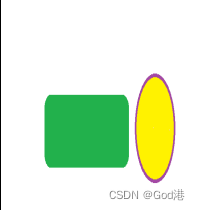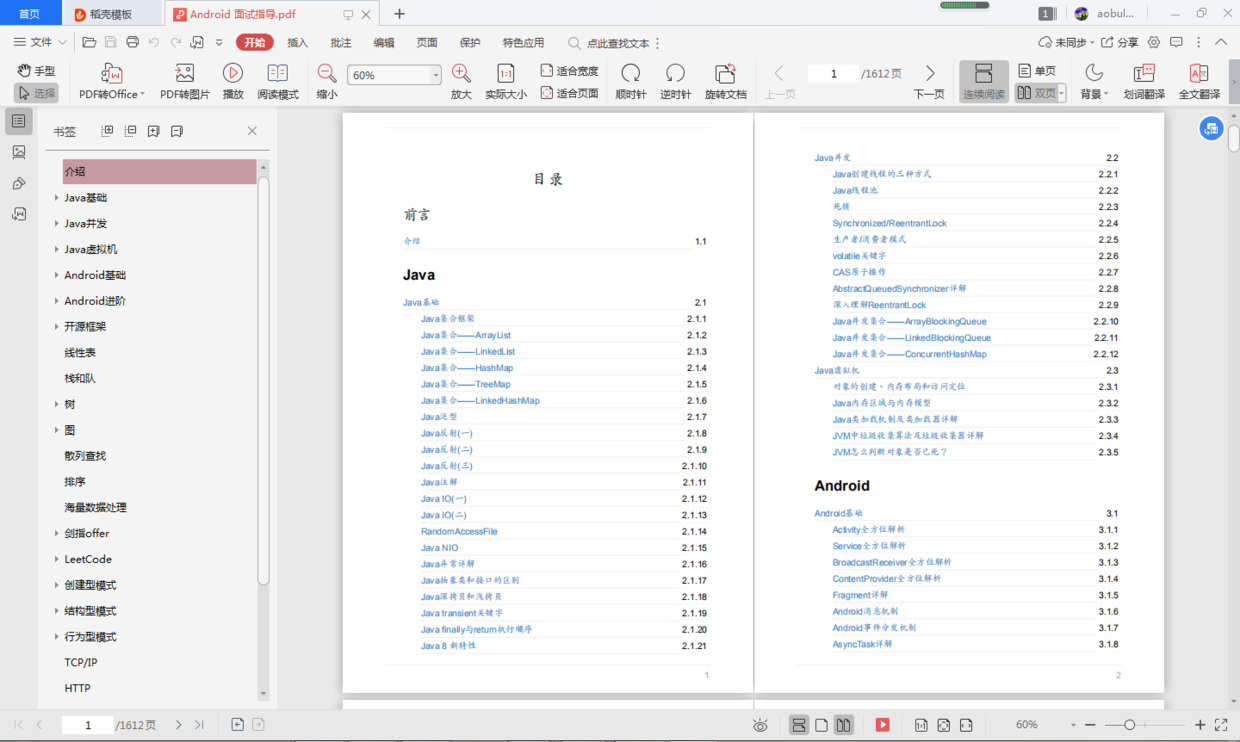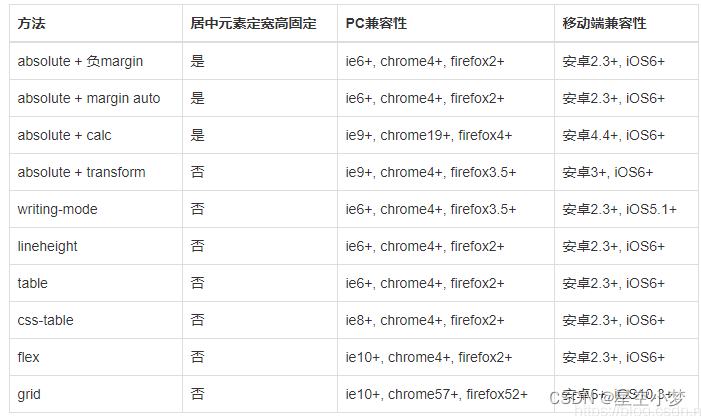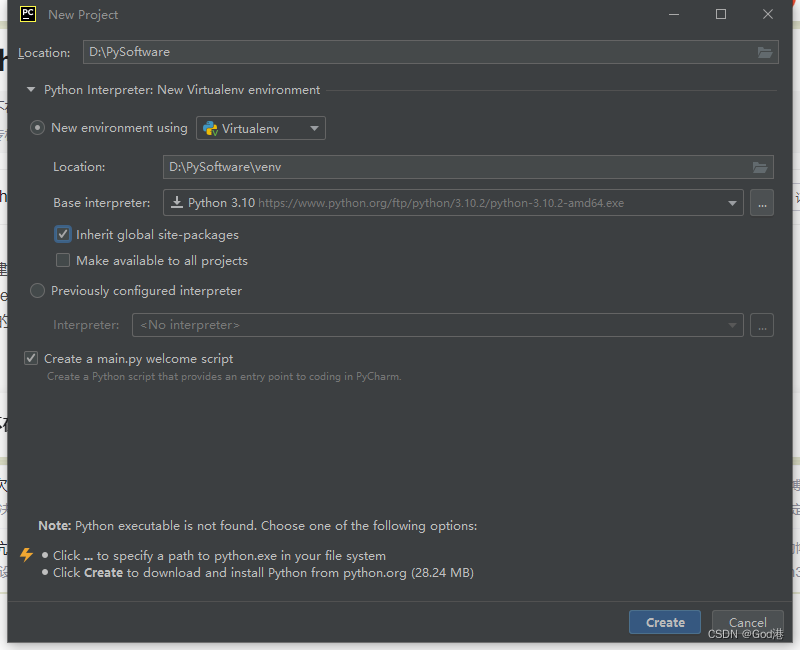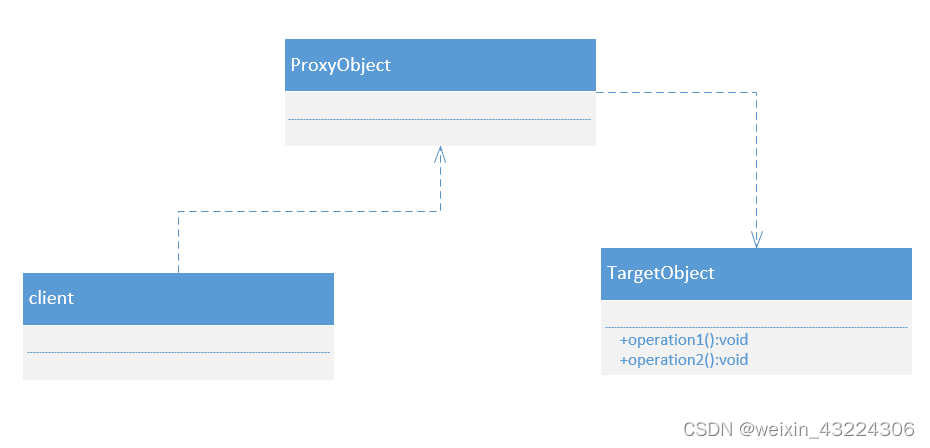当前位置:网站首页>Seaborn data visualization
Seaborn data visualization
2022-07-07 17:02:00 【En^_^ Joy】
use Seaborn Data visualization
Seaborn And Matplotlib
Matplotlib drawing
import matplotlib as mpl
import matplotlib.pyplot as plt
import numpy as np
plt.figure()
x = np.linspace(0, 10, 500)
y = np.cumsum(np.random.randn(500, 6), 0)
plt.plot(x, y)
plt.legend('ABCDEF', ncol=2, loc='upper left')
# display picture
plt.show()
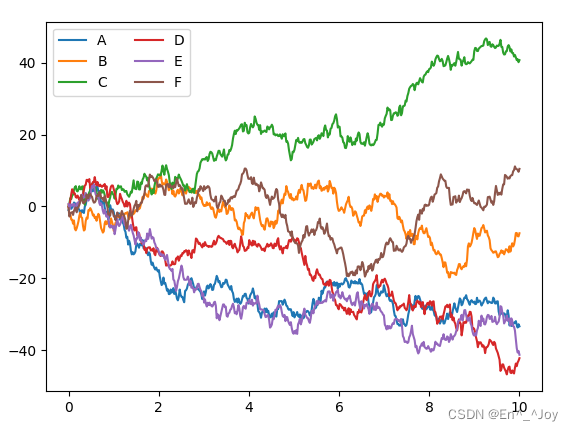
Seaborn There are many advanced drawing functions , And you can rewrite Matplotlib Default parameters , So as to use simple Matplotlib Get better results , It can be used Seaborn Of set() Method to set the style
Other codes are the same as above , Just add and import this module and use set() function
import matplotlib as mpl
import matplotlib.pyplot as plt
import numpy as np
import seaborn as sns
sns.set()
plt.figure()
x = np.linspace(0, 10, 500)
y = np.cumsum(np.random.randn(500, 6), 0)
plt.plot(x, y)
plt.legend('ABCDEF', ncol=2, loc='upper left')
# display picture
plt.show()
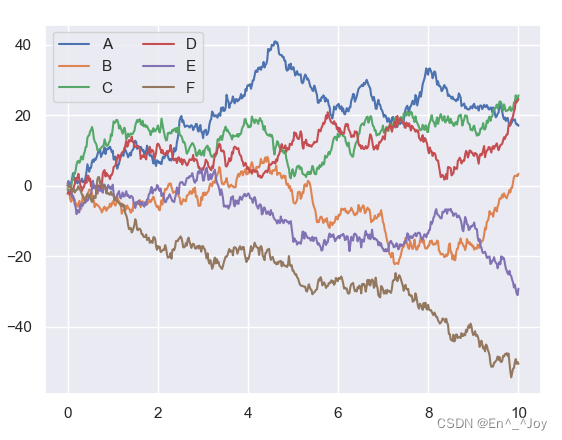
Seaborn Graphic introduction
For many graphics Matplotlib Can be realized , Three uses Seaborn Will be more convenient
Frequency histogram 、KDE And density diagram
Frequency histogram
import matplotlib as mpl
import matplotlib.pyplot as plt
import numpy as np
import seaborn as sns
import pandas as pd
sns.set()
plt.figure()
data = np.random.multivariate_normal([0, 0], [[5, 2], [2, 2]], size=2000)
data = pd.DataFrame(data, columns=['x', 'y'])
for col in 'xy':
plt.hist(data[col], alpha=0.5)
# display picture
plt.show()
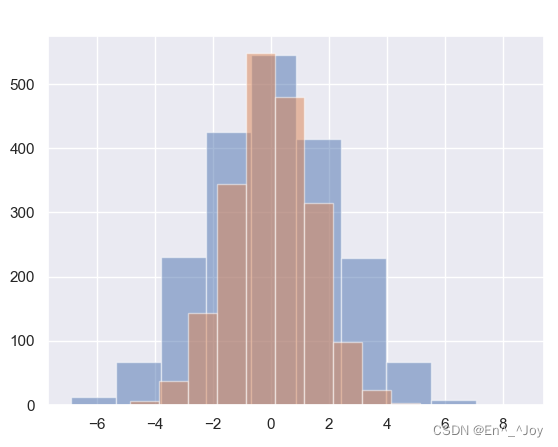
use KDE Get the smooth evaluation of variable distribution , adopt sns.kdeplot Realization
for col in 'xy':
sns.kdeplot(data[col], shade=True)

use distplot We can make the frequency histogram and KDE Combine
for col in 'xy':
sns.distplot(data[col])
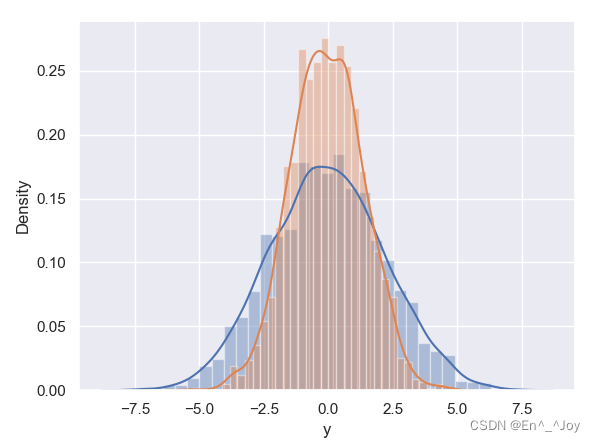
If you want to kdeplot The input is a two-dimensional data set , Then you can get a two-dimensional number visualization
sns.kdeplot(data['x'],data['y'])

use sns.jointplot You can see the joint distribution of two variables and the independent distribution of one variable at the same time , Use a white background here
with sns.axes_style('white'):
sns.jointplot("x", "y", data, kind='kde')
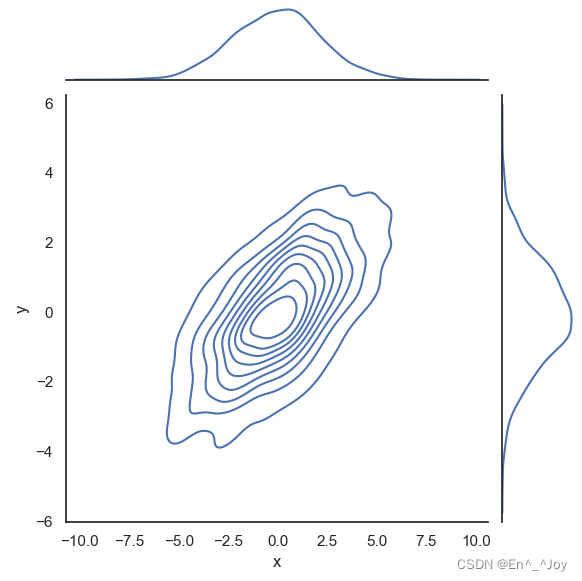
with sns.axes_style('white'):
sns.jointplot("x", "y", data, kind='hex')
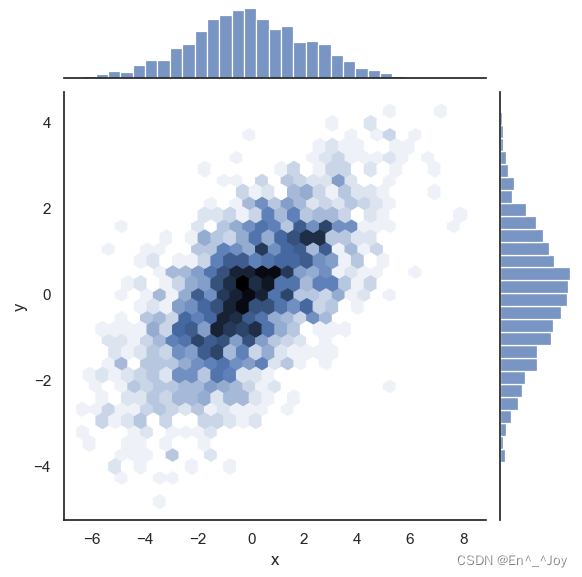
Matrix diagram
The following is a matrix diagram of the relationship between the four variables
import matplotlib as mpl
import matplotlib.pyplot as plt
import numpy as np
import seaborn as sns
import pandas as pd
sns.set()
plt.figure()
iris = sns.load_dataset("iris")
print(iris.head())
''' sepal_length sepal_width petal_length petal_width species 0 5.1 3.5 1.4 0.2 setosa 1 4.9 3.0 1.4 0.2 setosa 2 4.7 3.2 1.3 0.2 setosa 3 4.6 3.1 1.5 0.2 setosa 4 5.0 3.6 1.4 0.2 setosa '''
sns.pairplot(iris, hue='species', size=2.5)
# display picture
plt.show()
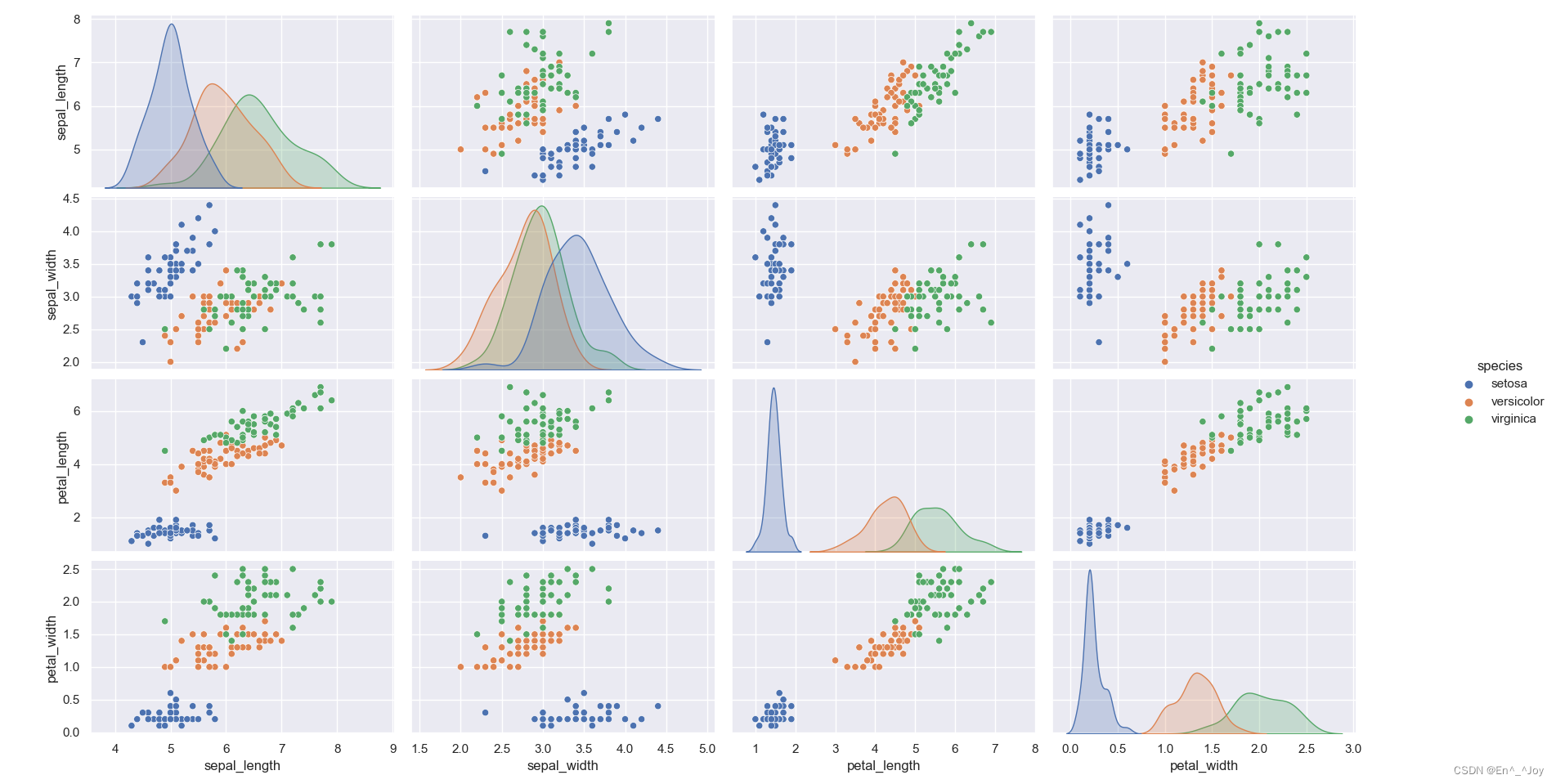
Faceted frequency histogram
import matplotlib as mpl
import matplotlib.pyplot as plt
import numpy as np
import seaborn as sns
import pandas as pd
sns.set()
plt.figure()
tips = sns.load_dataset("tips")
print(tips)
''' total_bill tip sex smoker day time size 0 16.99 1.01 Female No Sun Dinner 2 1 10.34 1.66 Male No Sun Dinner 3 2 21.01 3.50 Male No Sun Dinner 3 3 23.68 3.31 Male No Sun Dinner 2 4 24.59 3.61 Female No Sun Dinner 4 .. ... ... ... ... ... ... ... 239 29.03 5.92 Male No Sat Dinner 3 240 27.18 2.00 Female Yes Sat Dinner 2 241 22.67 2.00 Male Yes Sat Dinner 2 242 17.82 1.75 Male No Sat Dinner 2 243 18.78 3.00 Female No Thur Dinner 2 [244 rows x 7 columns] '''
tips['tip_pct'] = 100*tips['tip']/tips['total_bill']
grid = sns.FacetGrid(tips, row="sex", col="time", margin_titles=True)
grid.map(plt.hist, "tip_pct", bins=np.linspace(1, 40, 15))
# display picture
plt.show()
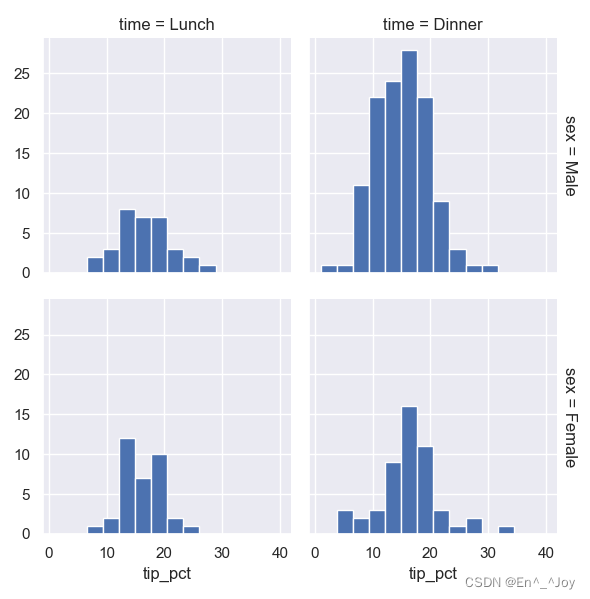
Factor map
import matplotlib as mpl
import matplotlib.pyplot as plt
import numpy as np
import seaborn as sns
import pandas as pd
sns.set()
plt.figure()
tips = sns.load_dataset("tips")
tips['tip_pct'] = 100*tips['tip']/tips['total_bill']
with sns.axes_style(style='ticks'):
g = sns.factorplot("day", "total_bill", "sex", data=tips, kind="box")
g.set_axis_labels("day", "Total Bill")
# display picture
plt.show()
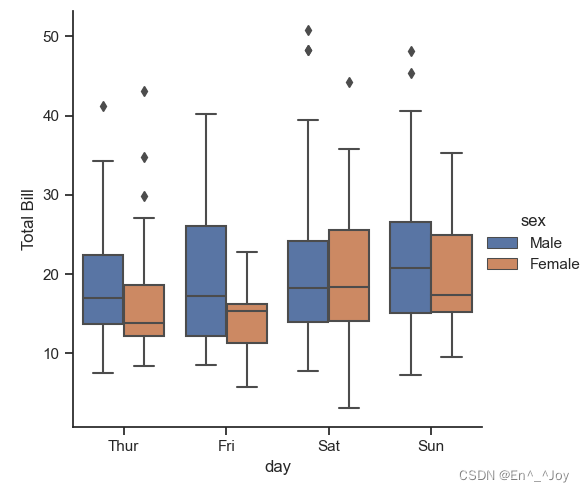
Joint distribution
with sns.axes_style('white'):
sns.jointplot("total_bill", "tip", data=tips, kind='hex')
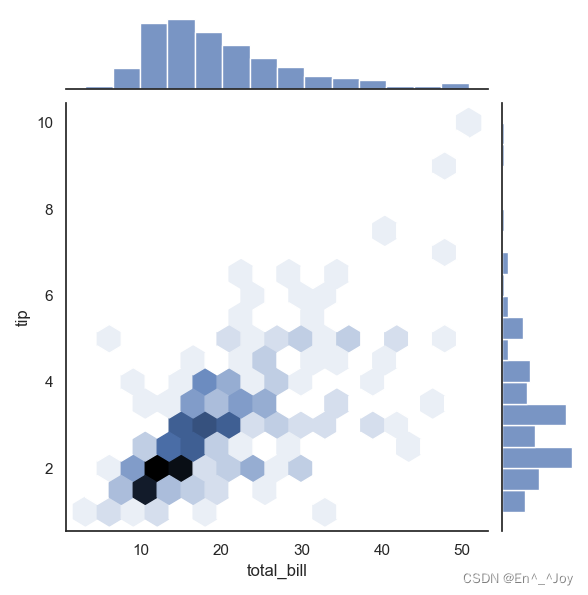
with sns.axes_style('white'):
sns.jointplot("total_bill", "tip", data=tips, kind='reg')
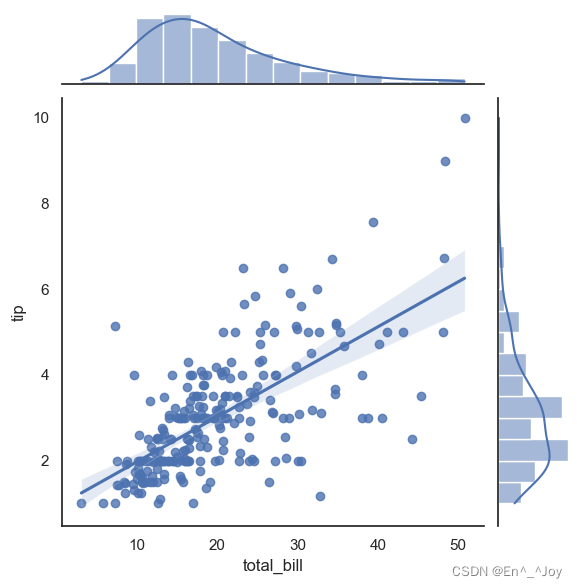
Bar chart :sns.factorplot Draw a bar chart
import matplotlib as mpl
import matplotlib.pyplot as plt
import numpy as np
import seaborn as sns
import pandas as pd
sns.set()
plt.figure()
planets = sns.load_dataset('planets')
print(planets.head())
''' method number orbital_period mass distance year 0 Radial Velocity 1 269.300 7.10 77.40 2006 1 Radial Velocity 1 874.774 2.21 56.95 2008 2 Radial Velocity 1 763.000 2.60 19.84 2011 3 Radial Velocity 1 326.030 19.40 110.62 2007 4 Radial Velocity 1 516.220 10.50 119.47 2009 '''
with sns.axes_style('white'):
g = sns.factorplot("year", data=planets, aspect=2, kind="count", color='steelblue')
g.set_xticklabels(step=5)
# display picture
plt.show()
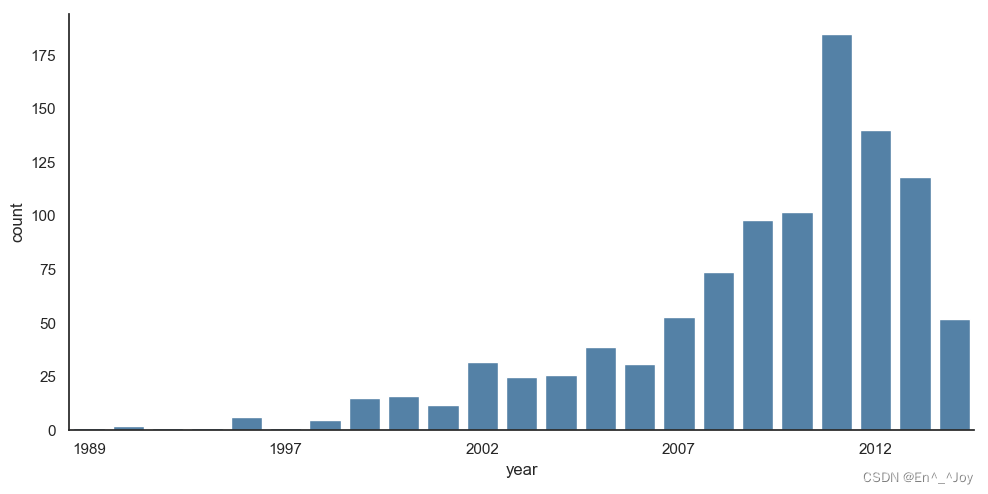
with sns.axes_style('white'):
g = sns.factorplot("year", data=planets, aspect=4.0, kind="count", hue='method', order=range(2001, 2015))
g.set_ylabels('Number of Planets Discovered')

边栏推荐
- 整理几个重要的Android知识,高级Android开发面试题
- 全网“追杀”钟薛高
- LeetCode-SQL第一天
- 直接上干货,100%好评
- 作为Android开发程序员,android高级面试
- Sort out several important Android knowledge and advanced Android development interview questions
- Vs2019 configuration matrix library eigen
- 最新阿里P7技术体系,妈妈再也不用担心我找工作了
- LeetCode 1986. The minimum working time to complete the task is one question per day
- Lie cow count (spring daily question 53)
猜你喜欢
随机推荐
【图像传感器】相关双采样CDS
C语言进阶——函数指针
LeetCode 300. Daily question of the longest increasing subsequence
LeetCode 1626. The best team without contradiction
QT中自定义控件的创建到封装到工具栏过程(二):自定义控件封装到工具栏
QT视频传输
Cesium (4): the reason why gltf model is very dark after loading
skimage学习(1)
【DesignMode】代理模式(proxy pattern)
如何选择合适的自动化测试工具?
LeetCode 1186. Delete once to get the sub array maximum and daily question
【DesignMode】享元模式(Flyweight Pattern)
LeetCode 152. Product maximum subarray daily question
第九届 蓝桥杯 决赛 交换次数
Three. JS series (3): porting shaders in shadertoy
SlashData开发者工具榜首等你而定!!!
面向接口编程
Master this set of refined Android advanced interview questions analysis, oppoandroid interview questions
Seaborn数据可视化
LeetCode 152. 乘积最大子数组 每日一题

